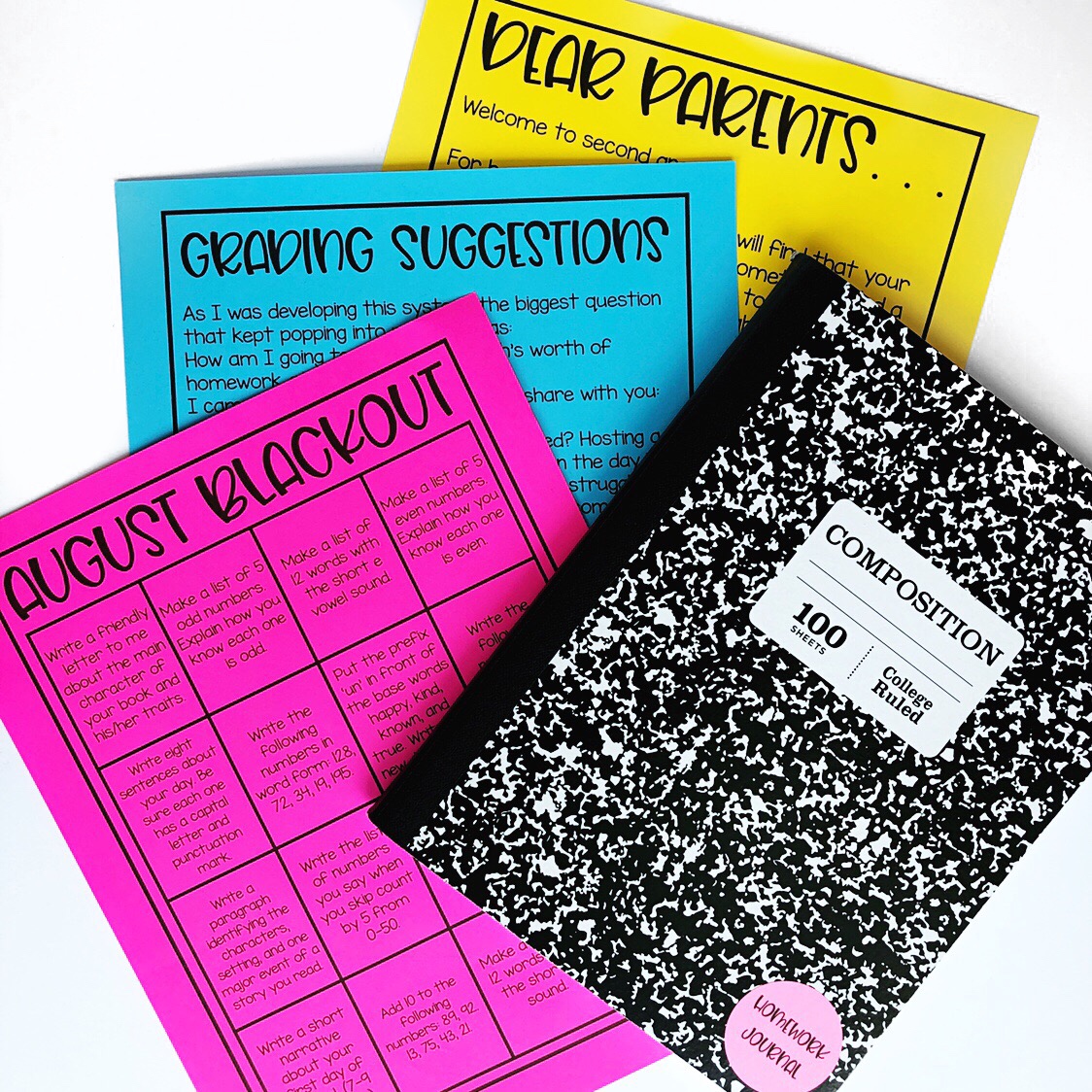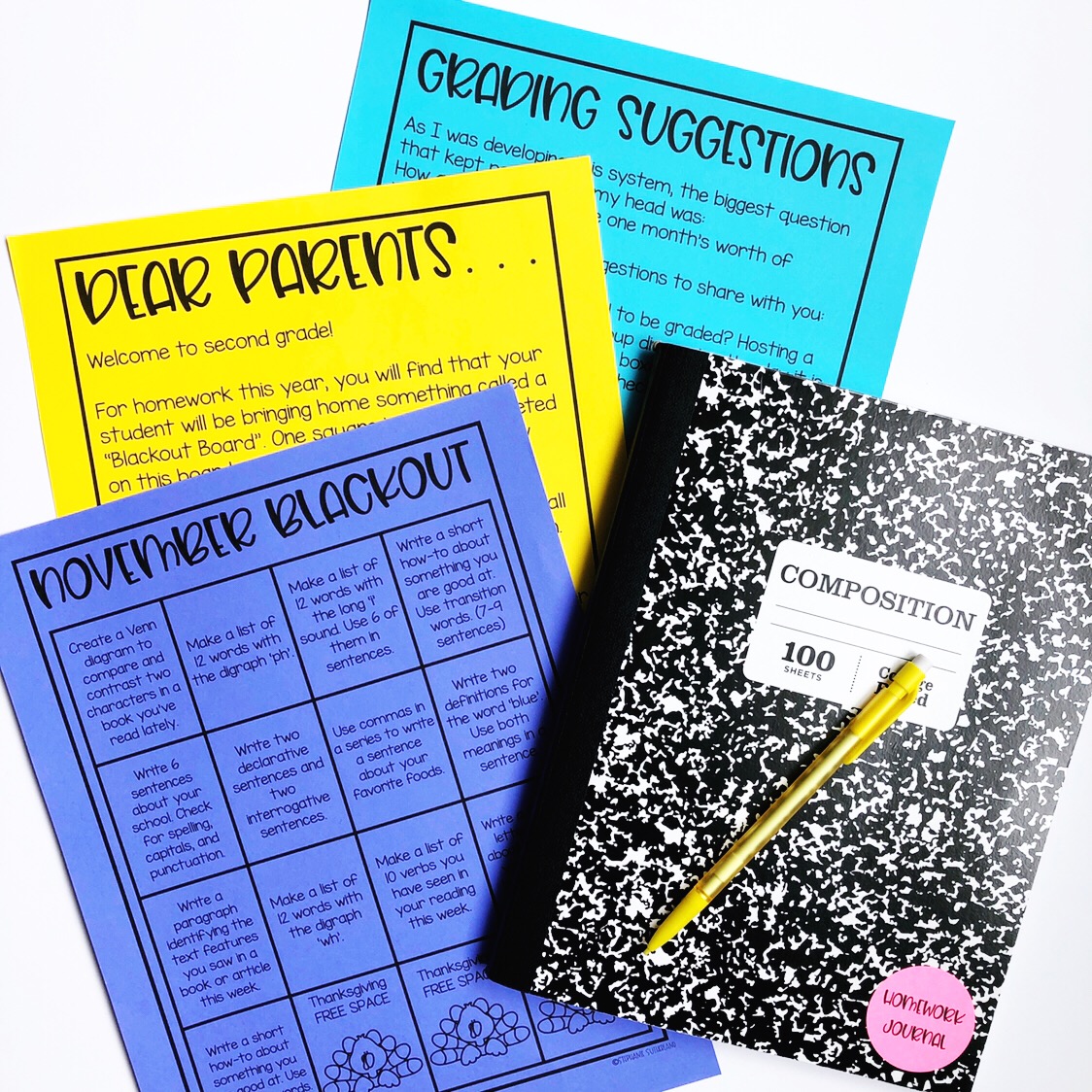Spiral Review Homework for 2nd Grade
Homework is the worst. Can I get an amen? As an elementary teacher, I don’t appreciate homework in the slightest. I really don’t know where we stand as a community on this, so I apologize if I just horribly offended you all. I just don’t like it. It’s extra stuff for me to manage, plan, assign, grade…and as more research rolls out that shows how ineffective homework is as a learning tool, I just feel less motivated to make a big deal out of it.
But, I have always worked in a place that mandates homework. And, as I had to make peace with this as a professional, this is where I landed:
-I didn’t feel like I ‘needed’ homework until I got to high school. That 46 minutes of French IV was just not enough for me to grasp translating verbs in various tenses. It most DEFINITELY wasn’t enough time for me to fully understand my geometry lesson. Then again, I think 3 hours of geometry a day still may not have helped me do better in that class...but that’s a post for another day. I simply needed to practice these things again at home to help cement them a little further.
-That feeling of ‘needing’ it continued in college where I was having to assign myself homework, because professors usually don’t do much of that, and I needed to brush up on my lecture notes in order to be ready for the surprise quiz that may come the next time I had class. So, although it feels arbitrary in elementary school, homework is a study and organizational skill that 1000% comes back up. I began to look at homework as a discipline skill of going home, sitting down to practice something, and come back to school a little bit stronger at a skill than they may have been the day before. Looking at it this way instead of trying to rationalize it in my head as a teaching moment, when it most definitely is not, helped me feel less like it was a waste of my time to assign it.
-f I am going to send homework home, it needs to be brief, for the sake of the very busy families I work with, but it needs to pack an instructional punch to make it purposeful. I like reviewing a variety of skills, especially in ELA, because grammar is basically just a hit-it-and-quit-it list of standards for us, and the reading skills spiral like crazy, so it’s smart to blend them together in weekly homework assignments so the kids get extra exposure to things that they may or may not see ever again through the year.
So, I made these homework blackout boards as a nod to myself, a busy teacher who doesn’t want to mess with prepping homework more than once a month, and to my kids and their families, who are sprinting from soccer, to gymnastics, to church, to swimming, to tennis, and on and on and on all week long.
2019’s students typically aren’t going home to a full evening of sitting at home, a family dinner around the table, and a full hour to devote to homework. The kids of the 80s and 90s had a little more time on our hands, but now we’re the teachers and we need to adjust our approach to meet the needs of the families we have.
So, here’s the premise: You assign the blackout board at the beginning of the month, and it is not due until the beginning of the next month. Students must complete one box, Monday-Thursday of every week, but because months aren’t always a perfect four weeks, there is bound to be a ‘free’ night here and there. Students can budget these and skip homework on very busy nights, or skip a few nights and double up on squares later. The beauty is you don’t need to know because it isn’t due back until the next month.
When I thought of this idea, the biggest question in my head was how to manage grading a month’s worth of homework prompts all coming in at the same time. Each blackout board comes with a list of grading suggestions to manage this. A couple of ideas up front:
-Discuss the answers to one row a day at the beginning of class for the week that a board is due and let students grade their own.
-Collect for a participation grade, and chose 3-4 squares to grade deeply for completion/understanding. Make the location of the squares random each month so students never know what you’re going to choose to grade.
One last note: I did not provide much in the way of “worksheets” to be copied with these boards. I planned for students to have one notebook to complete assignments in, or staple notebook paper to the boards when they turn them in. I provide a few graphic organizer-type pages with these boards, if you’re into extra copies, but I personally do not enjoy them., haha. Whatever works for you!
This flexible, easy-to-manage homework option is up in my TPT store for August-May! June will be added as a bonus freebie in my freebie library soon!
If you use these board, post about them on Instagram and tag me @stephaniesutherland_ so I can see and share! I love to know how teachers have put their own spin on things!
PS: These boards are versatile!
As these boards have been in my store for a while, stories have been coming out about how teachers are using them. Early finisher choice boards, morning work, and test prep are three of my favorites! Blackout Boards don’t only need to be for homework! :)













